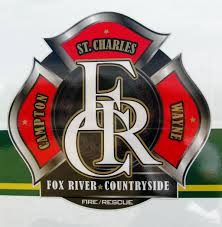Although the popularity of carbon monoxide (CO) alarms has been growing in recent years, it cannot be assumed that everyone is familiar with the hazards of carbon monoxide poisoning in the home.
Often called the silent killer, carbon monoxide is an invisible, odorless, colorless gas created when fuels (such as gasoline, wood, coal, natural gas, propane, oil and methane) burn incompletely. In the home, heating and cooking equipment that burn fuel potential sources of carbon monoxide. Vehicles or generators running in an attached garage can also produce dangerous levels of carbon monoxide.
Safety Tips:
• Install CO alarms inside your home to provide early warning of carbon monoxide
• CO alarms should be installed in a central location outside each separate sleeping area and on every level of the home and in other locations where required by applicable laws, codes or standards. For the best protection, interconnect all CO alarms throughout the home. When one sounds, they all sound.
• Follow the manufacturer’s instructions for replacement and mounting height.
• Combination smoke and CO alarms must be installed in accordance with requirements for smoke alarms.
• Choose a CO alarm that has the label of a recognized testing laboratory.
• Test CO alarms at least once a month; replace them according to the manufacturer’s instruction.
• If the audible signal sounds, check for low batteries. If the battery is low, replace battery. If it still sounds, call the fire department from a remote area outside of structure.
• Have fuel-burning heating equipment and chimneys inspected by a professional every year before cold weather sets in.
• When using a fireplace, open the flue for adequate ventilation.
• Never use your oven to heat your home.
• If you need to warm a vehicle, remove it from the garage immediately after starting it. Do not run a vehicle or any fueled engine or motor indoors, even if garage doors are open. Make sure the exhaust pipe of a running vehicle is not covered with snow.
• During and after a snowstorm, make sure vents for the dryer, furnace, stove, and fireplace are clear of snow build-up.
• A generator should be used in a well-ventilated location outdoors away from windows, doors and vent openings.
• Use battery-powered lights in tents, trailers and motor homes and motor boats.
• If the CO alarm sounds, immediately move to a fresh air location outdoors or by an open window or door. Make sure everyone inside the home is accounted for. Call 911 for help from a fresh air location and stay there until emergency personnel arrive.
If you would like additional information on Carbon Monoxide safety, please contact the Fox River and Countryside Fire/Rescue District at 630-584-3473 or email admin@frcfr.org.
Carl A. DeLeo, Fire Chief

